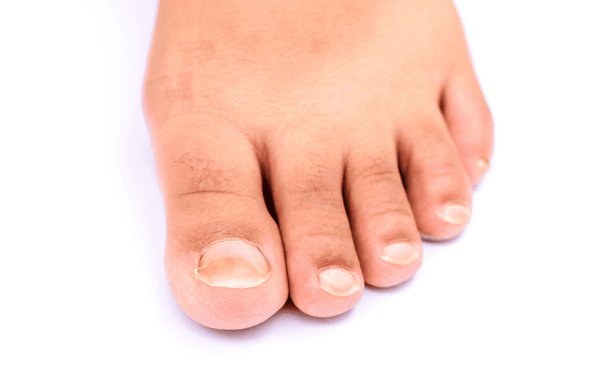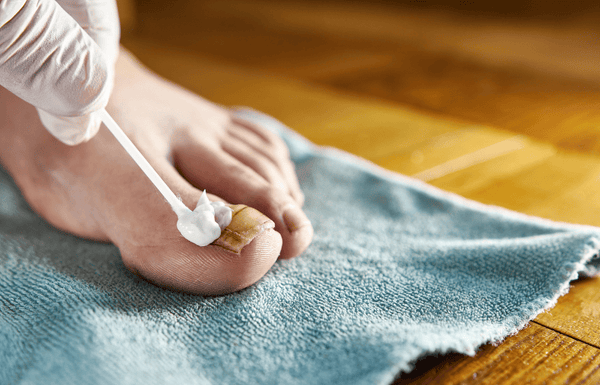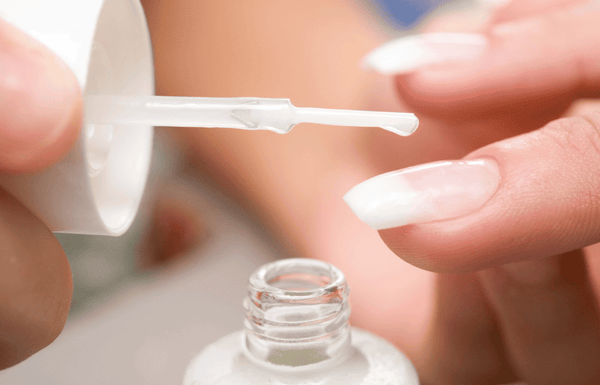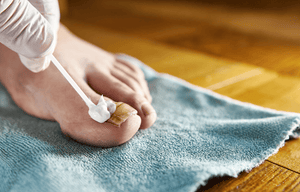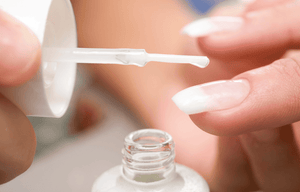
As temperatures rise and humidity levels climb, the human body naturally produces more sweat, like a built-in cooling mechanism.
Thus, it creates the perfect environment for an unwelcome guest: fungus. Warm, moist conditions are precisely what these microscopic organisms need to multiply.
Summer is the prime season for various fungal infections like athlete’s foot and those itchy rashes in the skin folds. If you’re not vigilant, these conditions can cause significant discomfort and spread rapidly.
Let’s explore the causes of foot fungus in warm weather, common fungal infections to watch out for in the summer, and the best ways to keep feet dry and fungus-free.
Why Fungal Infections Flare Up in Summer
Heat and Humidity Increase Sweat
When it's hot and humid outside, our bodies sweat more to regulate temperature, causing excess moisture in areas like the feet, groin, and underarms. This creates damp, warm pockets where fungi can thrive.
More Time in Communal Spaces
Summer means more time at public swimming pools, gyms, locker rooms, and beaches, all of which are hotbeds for fungal spores. Spores shed from infected individuals and can easily be picked up by others walking barefoot.
Tight, Non-Breathable Clothing and Footwear
Non-breathable synthetic fabrics, tight-fitting clothes, and closed-toe shoes worn without proper ventilation can create occlusive environments, holding sweat against the skin and encouraging fungal growth.
Outdoor Activities
More time spent outdoors hiking, playing sports, or simply walking, means more opportunities for feet to sweat and encounter fungal spores in the environment.
Common Fungal Infections to Watch For
Athlete’s Foot
Tinea Pedis aka athlete’s foot is the most prevalent foot fungus in the summertime. Symptoms include itching, stinging, and burning between the toes or on the soles of the feet. The skin may appear red, scaly, cracked, or even blistered. It spreads easily through direct contact with infected skin or contaminated surfaces. If left untreated, it can also cause toenail fungus.
Jock Itch
Affecting the groin, inner thighs, and buttocks, jock itch causes an itchy, red, often ring-shaped rash. It's common in athletes, active people, and anyone who sweats heavily, as tight clothing and moisture create perfect conditions for fungi.
Ringworm
Ringworm is caused by a fungus, not a worm, and appears as a red, itchy, scaly, circular rash with raised edges, often with a ring-like appearance. It can occur anywhere on the body and spreads quickly through skin-to-skin contact or contact with contaminated objects.
Yeast Infections and Intertrigo
Yeasts like Candida are different from dermatophyte fungi that cause athlete's foot and ringworm. But they can also thrive in warm, moist skin folds.
Intertrigo is an inflammatory skin condition in skin folds under the breasts, in the groin, or armpits due to friction and trapped moisture. It often becomes secondarily infected by yeast, causing redness, itching, burning, and sometimes a foul odor.
6 Everyday Habits That Make a Difference
1. Keep Skin Clean and Thoroughly Dry
Wash your body daily, paying special attention to areas prone to sweating, like between the toes, in skin folds, and the groin. After washing, dry these areas completely. Try using a hairdryer on the cool setting for hard-to-reach areas.
2. Breathable Fabrics and Moisture-Wicking Socks
Opt for clothing made from natural, breathable fibers like cotton or linen for more air circulation. Get socks made with moisture-wicking synthetic fabrics rather than cotton, which tends to absorb moisture. Remember to change your socks daily and often if they get damp.
3. Change Out of Damp Clothing ASAP
After swimming, exercising, or any activity that causes significant sweating, change out of wet swimsuits, sweaty workout gear, or damp socks as soon as possible. Never stay long in moist clothes!
4. Wear Flip-Flops or Shower Shoes in Public Showers and Pools
Guard against foot fungus this summer with these protective barriers that prevent your feet from coming into direct contact with fungal spores on communal surfaces.
5. Rotate Your Footwear
If you wear closed-toe shoes, try not to wear the same pair every day. Allow shoes to air out and dry completely for at least 24 hours between wears. Using shoe inserts that absorb moisture can also help.
6. Keep ToeNails Trim
Long toenails can trap moisture and debris, creating a haven for fungus. Trim your nails straight across and file the edges.
When to Use Antifungal Products like Dr. AntiFungus
For prevention and the treatment of mild cases, over-the-counter (OTC) antifungal products can be very effective.
Antifungal creams containing ingredients like clotrimazole, miconazole, terbinafine, or tolnaftate can be good for localized rashes and dry, scaly areas.
Medicated antifungal spray and antifungal soak by Dr. AntiFungus are more convenient for hard-to-reach areas and for getting immediate relief. These powerful solutions are formulated by doctors and recommended by dermatologists and foot specialists nationwide.
Medicated powders can also help by absorbing moisture and keeping the feet dry, especially between toes, in shoes, or in skin folds. They can be used preventatively or as part of treatment.
Don’t forget that even if your symptoms improve quickly, it's 100% necessary to continue using the antifungal product for the full duration recommended on the packaging (often 2-4 weeks). Stopping early can leave residual fungal spores, leading to a quick recurrence.
When to See a Specialist
While many fungal infections respond well to home care and OTC products, there are times when professional medical attention is necessary:
- Rash Spreads, Worsens, or Doesn’t Improve: If after a week of consistent home care with OTC antifungals your rash is not getting better, or if it's spreading rapidly or becoming severe, it's time to see a doctor.
- Infection Becomes Painful, Cracked, or Develops Secondary Bacterial Infection: Deep cracks, excessive redness, swelling, pus, or severe pain can indicate a secondary bacterial infection, which requires antibiotics in addition to antifungal treatment.
- Recurrent Infections: If you repeatedly battle fungal infections, an underlying condition like diabetes or a weakened immune system may be to blame. A doctor can help identify the root cause and suggest stronger treatments or preventative strategies.
- Suspect Toenail Fungus: Toenail fungus is notoriously difficult to treat with OTC products alone and often requires prescription oral medications or other therapies.
Keep Feet Dry & Fungus-Free This Summer with Dr. AntiFungus
Summer delivers on the fun times, but it also unfortunately creates the perfect breeding ground for various skin fungus issues, such as athlete's foot, jock itch, and ringworm.
Fighting fungus in warm weather boils down to staying cool, dry, and proactive. Prioritize skin health by keeping areas clean and dry, choosing breathable clothing, and using antifungal products like Dr. AntiFungus soaks and sprays when needed.
Don't hesitate to seek professional help early if an infection takes hold or becomes persistent. A few simple steps can keep you clear and comfortable all summer long.
Just remember to keep up your foot hygiene and keep Dr. AntiFungus doctor-formulated products on hand for a fungus-free season. Happy summer!
